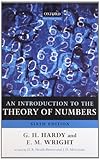THEOREM 280: If s > 1 then
Since p ≥ 2, we have
for s > 1 (indeed for s > 0). If we take p = 2, 3, ... , P, and multiply the series together, the general term resulting is of the type
where
A number n will occur if and only if it has no prime factors greater than P, and then, by †Theorem 2, once only. Hence
the summation on the right-hand side extending over numbers formed from the primes up to P.
These numbers include all numbers up to P, so that
and the last sum tends to 0 when P → ∞. Hence
the result of Theorem 280. □
出典:G.H.Hardy and E.M.Wright. An Introduction to the Theory of Numbers P320. THEOREM 280.
―――――――――――――――――――――――――――――――――――――――――――
訳と補足:
まず、原典のP3より†定理2を記す。
定理2(算術の基本定理):数nの基本形は一意(別の因数の形で再構成すること)である。nは一通りの素数の積で表わされる。
証明は、ユークリッドの補題によって簡単に示される。
定理280: s > 1ならば
p ≥ 2とすると、s > 1から(実際にはs > 0)
を得る。p = 2, 3, ... , Pと級数の掛け算を共に使用するならば、一般的な表現は
であり、
となる。Pを超える素因数がない場合にのみ、定理2から1つだけ数nが生じるだろう。これにより、
拡張した右辺の総和が、Pまでの素数から形成された。
これらの数は、全てのPまでの素数を含む。そのため
であり、P → ∞のとき、最後の和は0になる。これより、
定理280の結果を得る。□
―――――――――――――――――――――――――――――――――――――――――――
ゼータ関数を積の形で与える、オイラー積表示を求めた。証明の内容としては、因数分解を行い、算術の基本定理から、はさみうちの原理で簡単に示されている。算術の基本定理の証明については省略する。
こうして、ゼータ関数を拡張することで得られる結果は格段に増えることになる。ゼータ関数が素数pを用いた形で表現されることは注目に値する。
 | An Introduction to the Theory of Numbers 5,406円 Amazon |

